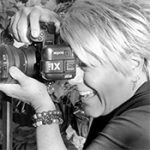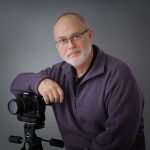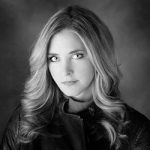Intro by Skip Cohen
Bob Coates has been a good buddy for a lot of years. Our friendship grew out of my love for his work as both an artist and educator. He’s always looking for ways to help us raise the bar on our images and in this post out of his archives, the enjoyment we get when we’re out shooting for ourselves.
Bob lives in one of the most beautiful places on the planet – Sedona. If you’ve been there, you already understand what I’m talking about, because it’s not just the physical beauty but the spirituality in the air. But, to Bob’s point – just being around beauty doesn’t mean each click of the shutter is going to capture it!
We’re going in a little different direction in today’s post, with some great tips for better images. Bob’s foundation is a hike around Sedona – like so many of you when he’s not working for a client, he’s out searching for the ultimate image for himself.
So, two points I love about this post…first is the way Bob shares some great tips to get the most of what you’re trying to capture. But second, I want to use this as a reminder to take the time to create for your own heart.
Being an artist and a small business owner, there are times when you need to step away from the business. You need to recharge your battery to keep your passion for the craft alive. We all have moments of stress and frustration. Learn to recognize them and take a break when you need it. Most important of all, remember, you can’t create images that tug at people’s hearts if your own heart isn’t in it!
By Bob Coates
I’m always told how lucky I am to live in a beautiful place. Living in Sedona gives me some wonderful chances to make images that are just a bit different than others. Different is good. It attracts attention because of the red rocks and scenery. BUT, the beautiful view does not guarantee a beautiful photo. It only ensures a superb photo opportunity.
It’s about light, composition, shadow and more
I often remind people to remember that it is about light. It’s about composition. It’s about the shadows. It’s about all of these things and more. All of these items when appropriately assembled into frame take a beautiful scene and make it memorable. Do I always accomplish this? Hell no! But, lots of fun is in the trying.
Here are a couple of images from hikes a couple days ago. These are from Bell Rock Vista in the Village of Oak Creek just south of Sedona where the red rocks reaching to the heavens begin. Think of the Grand Canyon upside down.
Here is the middle exposure from a bracket
With the image above we have detail in the shadows and the highlights, but overall it appears flat and relatively uninteresting even though it is a beautiful subject. I photographed a five-stop exposure bracket because I knew there wouldn’t be enough exposure range in a single capture due to the deep shadow area and the sunlit highlights.
Using two separate exposures and blending with Aurora HDR 2018
Post-processing Rocks!
The processed image above was more as the eye would see it. The eye’s pupil opens and closes depending upon the amount of light it is viewing. We have more detail and color in the shadow areas and better color and detail in the sunlit area including the sky. In my opinion, the image only begins with the capture in camera. Post-processing is necessary to complete the vision and to show the scene as the artist wishes it.
Tiny flowers with a skim of sunlight caressing the blooms
See the Light
The flower image shows how just a small shaft of the sun can highlight a subject and break it away from the background.
My shooting kit for a general walkabout hike is the Lumix G9 with the Leica DG Vario-ELMARIT Professional Lens, 12-60MM, F2.8-4.0 . I also have a * Think Tank Mirrorless Mover 20 belt pack with some extension tubes (used on the flower image above) and an extra battery. Also, sometimes I’ll have an extra lens or two.



















